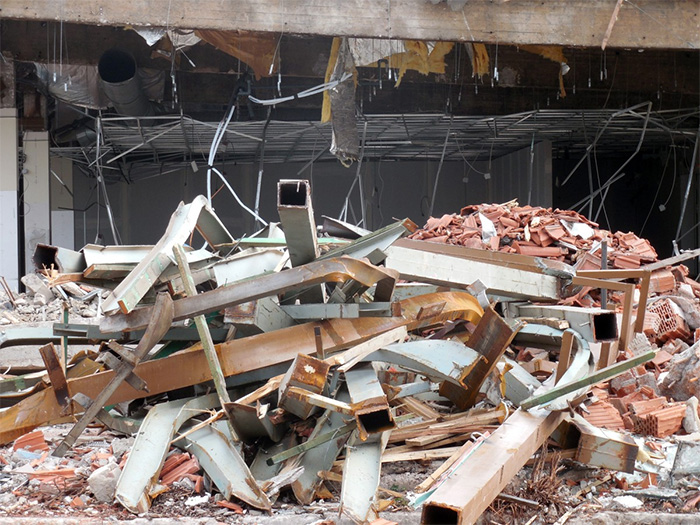All of those do-it-yourself home remodeling shows make renovations look at easy as tearing out the old and installing the new. Homeowners decide that they want a total remodel so they go for it–knocking out walls with sledgehammers, ripping up floors, and stirring up a flurry of dust. When they are finished, the result may be a sparkling new kitchen, a luxurious bath or an expanded living space big enough for the entire family to watch the game while snacking on family favorites. After watching individuals do all of that tearing down and building up in 30 minutes you may feel ready to hit the local home improvement store and purchase what you need to get your renovation on!

Proceed with Caution
Before you start tearing down walls and ripping up materials, there is something you need to consider–your renovation debris can be hazardous! If you are renovating an older home, asbestos may have been used in building materials like insulation and ceiling tiles. Lead paint is another culprit, and don’t forget that mold can be a health hazard if not dealt with carefully.
Asbestos
Asbestos fibers and particles can cause damage to the lungs and long-term exposure can lead to cancer. There are several materials that contain asbestos including ceiling tiles, floor tiles, backing on linoleum and vinyl flooring, shingles, roof flashing, roof tar and plaster coating. Removing these materials without the proper protective gear and containment techniques can result in dangerous fibers and particles being released into the air, putting anyone who is exposed at risk. Prior to renovating, consult a qualified asbestos inspector who can evaluate the materials in your space and let you know if you need a professional to help you get rid of asbestos-laden materials.
Lead paint
If the home you are renovating was built before 1978, it probably contains some lead-based paint. Removing painted trim and drywall or scraping away peeling paint can put you and others at risk for lead exposure. Lead exposure can be especially dangerous for children and pregnant women because exposure to lead in young children can impact learning ability. There are kits available for testing for lead paint, however, just like asbestos, if you are unsure about how to handle the removal of lead paint, leave it to the professionals.
Mold
Where there is a moisture problem, there will likely be mold. If your renovation involves removing moldy materials, make sure you have the tools and protective equipment to do the job. Mold like other hazards can cause health problems. Haphazardly removing moldy materials can result in mold spores being released into the environment where the work is being done. You can avoid breathing in mold during renovation by wearing respiratory protection. The N-95 respirator can protect your from inhaling mold particles. However, having a professional remove moldy materials is the best practice.
Don’t let the excitement of seemingly simple renovations lead to exposure to hazardous debris. Consult a professional before you jump headfirst into a renovation project. If you decide to do it yourself, make sure you contact your local environmental health or solid waste disposal department to determine how to discard hazardous renovation debris.
This post is written by American Junk. If you’re moving, or just need junk hauled, take a look over at American Junk. American Junk is an all-inclusive junk removal service focusing on both residential and commercial locations.